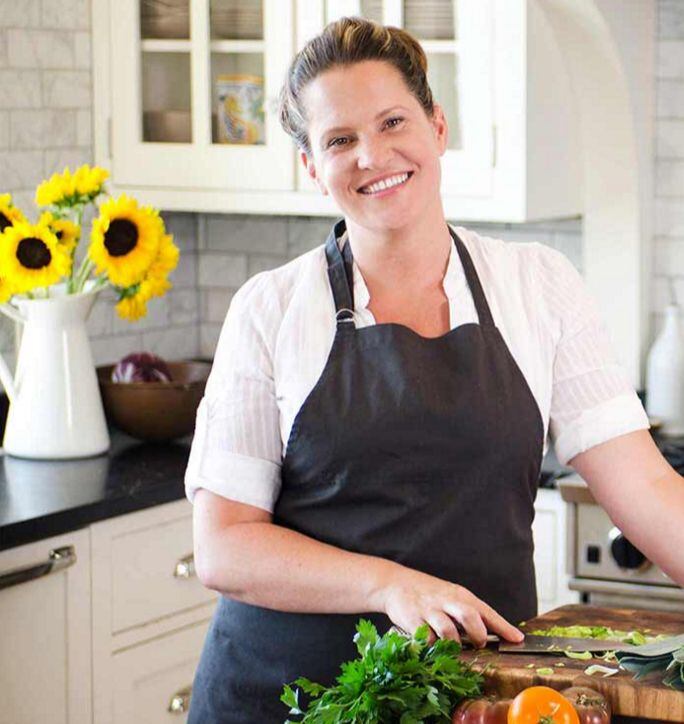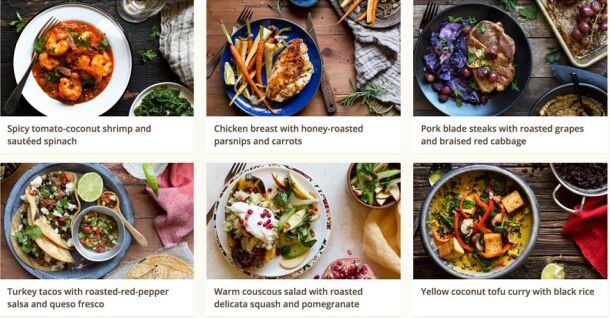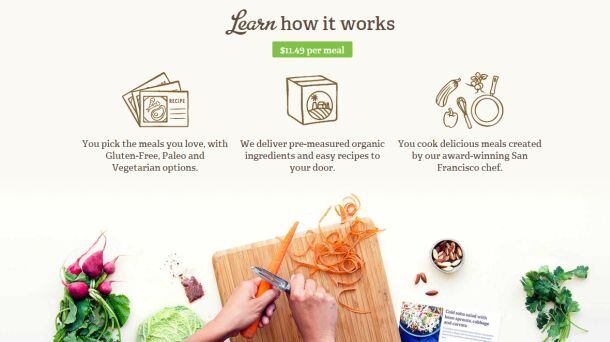“We started testing the concept earlier this year and we’ve just had a phenomenal response and amazing growth. Yes, there are a lot of players entering this market and a lot of interest [from investors], but we think there are going to be a lot of winners in this market, as everyone is occupying a slightly different space.
“Blue Apron is coming in at around $10 a meal, and we’re at $11.49 a meal, but we’re organic and non-GMO. But you also have other services closer to $16-20 per meal, and everyone is offering a different value proposition."
San Francisco-based Sun Basket, along with firms such as Blue Apron, Plated, PlateJoy and HelloFresh, is designed to make life easier for people that enjoy cooking, but don’t always have the time and energy to find new recipes and shop for all the ingredients, he says.
This is not exclusively for people that are making $100k+ a year
So how does it work?
It’s very simple, says Barnett, who founded organicgirl produce and joined Sun Basket in August: You choose your meals from the website (the recipes are developed by Chef Justine Kelly, former head chef of the James Beard Award-winning The Slanted Door restaurant) and Sun Basket does the rest: collating and delivering the ingredients for three meals-for-two to your door once a week [currently on Wednesdays], so all you have to do is cook. There are vegetarian, gluten-free and paleo options.
Now while this might have Grandma turning in her grave, Grandma probably had more time for meal planning and shopping, founder and CEO Adam Zbar told FoodNavigator-USA.
“I think people thought that these kinds of services would just be for affluent techies and Millennials in the Bay area, but in fact we’re seeing customers of all ages, and 60-70% of our customer base is suburban.
“Typically our customers are 34-45+ although we see younger people and empty nesters with some disposable income on the other side, but this is not exclusively for people that are making $100k+ a year. The customer base skews female, but we’re seeing a lot of men use the service.”
The Sun Basket story
Founded in San Francisco in 2014 by Adam Zbar and Chef Justine Kelly, Sun Basket is currently available in California, Washington, Oregon, Idaho, Nevada, Utah, Colorado and Arizona, and plans to expand to additional markets in 2016. It currently has one central distribution center where orders are collated and prepared, but plans to open more as the service expands beyond the west coast. It then partners with logistics companies to deliver the orders to consumers.
Its focus is on:
- Sourcing the highest quality organic, non-GMO ingredients from Northern California's best farms, ranchers, and fishermen;
- Providing balanced, diet-specific recipes, including paleo, gluten-free, and vegetarian options;
- Allowing users to customize meal selections based on personal choice;
- Delivering farm-to-table recipes that take fewer than 30 minutes to cook;
- Making sustainability easy: Users ship back their boxes and packaging for recycling and re-use (click here);
- Free delivery.
Low churn rate
But how does Sun Basket make money via this business model?
The economics don’t make sense if you are only delivering components for one dish at a time, acknowledges Barnett, but the equation changes once you hit three meals (six portions – as each meal is designed for two).
“Most of our customers are using us for two, three or four weeks on any given month, and we supply three meals per week, and the economics of that work just fine. We’re also looking at broadening the offer. So right now we’re focused on dinner for two, but there are all kinds of things we are exploring for the future [eg. Blue Apron has a family meal option].”

And at 11.49 per meal (that’s a maximum of $68.94/week, or $3,584/year), securing just 45,000 active users that use the service two to three times a month potentially means revenues of well over $100m a year, he points out. Now of course, not everyone is going to choose three meals a week, every week, for 52 weeks of the year (there are options to skip a week), but the numbers quickly start to look very juicy on a relatively modest customer base, says Zbar.
“Our investors saw a lot of east coast players in this space, but they didn’t see a leading player on the west coast, so people are pretty excited about the opportunity.”
And this has also helped Sun Basket attract some high-profile investors, adds Zbar, who recently secured $4.5m venture funding from well-known names including PivotNorth Capital, Baseline Ventures, Paul Allen's Vulcan Capital, Roth Capital, The Florence Group, Rembrandt Ventures, Correlation Ventures, Relevance Capital, Lucas Venture Group, and others.
As for customer retention rates – a critical metric investors look at for any subscription business – they are extremely encouraging, he says, although it is still very early days (the service only launched in March): “Our churn rates are less than 10% a month, which is fantastic.”

Food safety: It’s one of the biggest challenges of the whole meal delivery market
Asked about food safety – something that has created headaches for some players in this market as food left sitting on a doorstep for any length of time can become a breeding ground for pathogens – Sun Basket says the box and insulation are designed to keep your ingredients cold through shipment (meats and fish are cryovaced to keep them fresh).
However, “Abuses can occur and we’re working on some new packaging formats to help tackle this problem,” says Barnett. “It’s one of the biggest challenges of the whole meal delivery market.”

Word of mouth
As for attracting customers, social media strategies are key, says Zbar, who says targeting Mommy bloggers, nutritionists and key influencers online has proved extremely effective.
However, most customers still come through word of mouth, he says.
